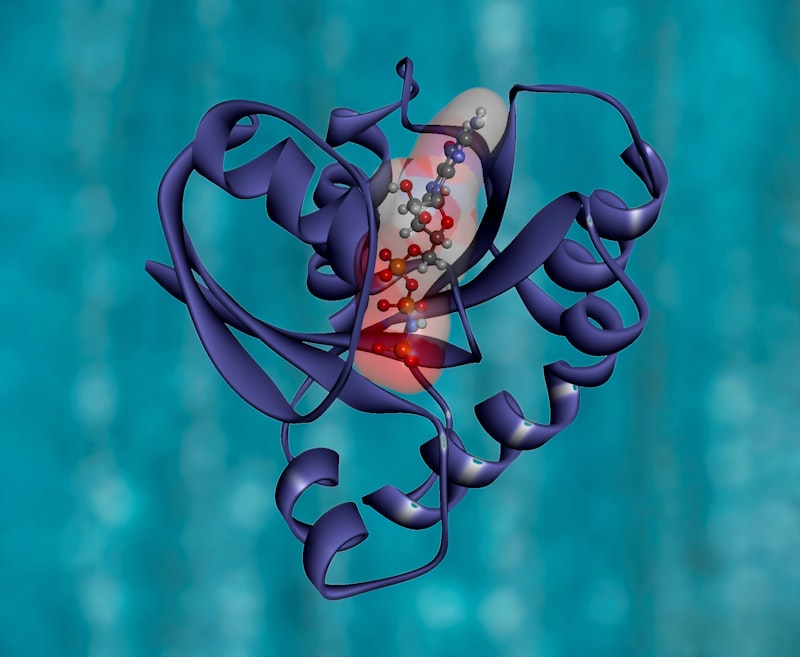In essence, conservation genetics is akin to a genetic detective, delving deep into the DNA blueprint of species on the brink of extinction. By unraveling the genetic code unique to each population, scientists can pinpoint crucial information like genetic diversity, population size, and even the historical migrations of species over millennia. It’s like peering into a time capsule buried within the genes, revealing secrets that are crucial for their survival.
One of the primary goals of conservation genetics is to understand how genetic diversity within a species influences its ability to adapt to changing environments. Think of it as a species’ arsenal—a diverse genetic pool equips them with resilience against threats like habitat loss, climate change, and diseases. Much like a diverse portfolio shields investments from market fluctuations, genetic diversity buffers species from extinction risks.
Moreover, conservation genetics doesn’t just stop at diagnostics—it’s a proactive tool for conservation strategies. By identifying key genetic hotspots and vulnerable populations, conservationists can prioritize areas for protection and restoration efforts. It’s akin to fortifying the weakest links in a chain to ensure its strength—a targeted approach that maximizes conservation impact.
Conservation genetics isn’t merely about understanding genes; it’s about securing the future of our planet’s biodiversity. It empowers us to make informed decisions that safeguard species from disappearing forever, ensuring that future generations can marvel at the wonders of our natural world.
Unlocking Nature’s Code: How Conservation Genetics Is Reshaping Wildlife Preservation
Conservation genetics stands at the forefront of modern wildlife preservation efforts, revolutionizing the way we understand and protect species. By delving into the genetic makeup of animals and plants, scientists can unravel intricate details about their diversity, evolution, and susceptibility to environmental changes.
Imagine a world where each species holds a unique genetic blueprint, akin to a complex puzzle waiting to be deciphered. This is precisely what conservation genetics aims to achieve. Through advanced techniques like DNA sequencing and genetic mapping, researchers can identify key genetic markers that define a species’ resilience to habitat loss, climate change, and disease.
One of the most remarkable applications of conservation genetics lies in its ability to track populations over time. By analyzing DNA samples collected from different regions, scientists can trace the movements and interbreeding patterns of endangered species. This not only helps in monitoring population health but also aids in designing targeted conservation strategies.

Moreover, conservation genetics plays a pivotal role in species reintroduction programs. Before releasing animals bred in captivity back into the wild, geneticists analyze their DNA to ensure genetic diversity and compatibility with existing populations. This approach boosts the chances of successful reintroduction and long-term survival in their natural habitats.
In essence, conservation genetics is like a guiding compass for wildlife preservation, providing crucial insights that traditional conservation methods alone cannot offer. By understanding the genetic diversity within and between species, conservationists can make informed decisions to protect biodiversity hotspots and ensure the survival of endangered wildlife for future generations.
Genetic Guardians: Preserving Endangered Species Through Cutting-Edge Conservation Techniques
Imagine a world where majestic creatures like the Siberian tiger or the giant panda disappear forever. It’s a bleak picture, but thanks to advancements in conservation science, there’s hope on the horizon. Enter genetic guardianship, a groundbreaking approach to saving endangered species from the brink of extinction.
So, what exactly are genetic guardians? Think of them as superheroes on a microscopic level. These scientists and conservationists use state-of-the-art techniques to safeguard the genetic diversity of endangered animals. Why does genetic diversity matter? Well, just like a diverse investment portfolio lowers risk, genetic diversity ensures species can adapt and survive in changing environments.
One of the most powerful tools in the genetic guardians’ arsenal is cryopreservation. It’s like freezing a piece of genetic treasure for future generations. By collecting and storing genetic material—such as sperm, eggs, or embryos—scientists can maintain a backup plan for species facing imminent threats.

But genetic guardianship goes beyond freezing samples. It involves cutting-edge technologies like in vitro fertilization (IVF) and embryo transfer. These methods can help revive dwindling populations by boosting reproductive success. It’s like giving endangered species a second chance at expanding their families and thriving in their natural habitats.
Imagine a scenario where a species is reduced to just a handful of individuals. Genetic guardians can step in, using their expertise to carefully manage breeding programs. By selecting genetically diverse mates and ensuring healthy offspring, they lay the groundwork for sustainable population growth.
In essence, genetic guardianship isn’t just about saving cute animals—it’s about preserving entire ecosystems. When we protect endangered species, we maintain the delicate balance of nature. It’s like tending to a vast garden where each plant plays a crucial role in the beauty and functionality of the whole landscape.
From Lab to Wilderness: The Impact of Genetic Research on Saving Threatened Wildlife
Genetic research has sparked a revolution in wildlife conservation, bridging the gap between laboratory innovation and real-world conservation efforts. Imagine this: scientists in white coats peering into microscopes to unravel the mysteries hidden within the DNA of endangered species. Their mission? To decode the genetic blueprint that holds the key to survival for these majestic creatures.
In the heart of the lab, geneticists delve deep into the genomes of endangered animals like the Amur leopard or the Sumatran rhinoceros. They extract tiny samples of tissue, each containing a treasure trove of genetic information. These samples become windows into the past and pathways to the future, guiding conservationists on a journey to revive dwindling populations.
But how does genetic research truly impact wildlife conservation efforts beyond the confines of the laboratory? Picture this scenario: a team of conservationists standing amidst the dense foliage of a rainforest, armed not just with binoculars but with groundbreaking genetic insights. Armed with the knowledge gleaned from years of meticulous research, they can pinpoint individuals within a species that possess unique genetic traits crucial for survival in changing environments.
Genetic diversity, often the unsung hero of conservation, plays a pivotal role. It’s like having a diverse toolbox with a range of tools to tackle different challenges. Just as a well-stocked toolbox ensures you’re ready for any DIY project, genetic diversity ensures species can adapt to new threats like habitat loss or climate change.
Moreover, genetic research isn’t just about preserving what’s left; it’s about resurrecting what’s lost. Advances in cloning and assisted reproduction techniques offer a glimmer of hope for species on the brink of extinction. Imagine a future where extinct species like the passenger pigeon or the woolly mammoth roam the wilderness once more, thanks to genetic resurrection.
In essence, genetic research is more than just a scientific endeavor—it’s a beacon of hope for our planet’s biodiversity. By understanding and harnessing the power of genes, we can rewrite the future of endangered species and ensure that our wilderness remains vibrant and alive for generations to come.
DNA Solutions: How Conservation Genetics Offers Hope for Species on the Brink
In essence, conservation genetics harnesses the power of DNA to address pressing issues such as habitat loss, climate change, and human impact on ecosystems. Each species carries a unique genetic blueprint, akin to a personalized identity card embedded within its DNA strands. This genetic fingerprint not only distinguishes one species from another but also holds vital clues to its evolutionary history and resilience.
The process begins with collecting genetic samples—often from blood, hair, or tissue—carefully extracted without harm to the animals. These samples are then analyzed in specialized laboratories where DNA sequencing techniques unveil the intricate genetic makeup of the species. Scientists meticulously study these genetic markers, akin to reading a story encoded in the language of nucleotides.
One of the pivotal uses of conservation genetics lies in assessing the health of populations. By analyzing genetic diversity within a species, scientists can gauge its ability to adapt to environmental changes and avoid the pitfalls of inbreeding depression. Moreover, DNA analysis helps in identifying distinct populations or subspecies that may require targeted conservation strategies tailored to their genetic uniqueness.
Beyond preservation, conservation genetics plays a pivotal role in reintroduction programs. By ensuring that released individuals carry a diverse genetic background, conservationists enhance the resilience of reintroduced populations, promoting long-term survival in their natural habitats.
The Power of Genetic Diversity: Safeguarding Ecosystems Through Conservation Genetics
Have you ever wondered about the secret ingredient that keeps our ecosystems thriving and resilient? Look no further than genetic diversity – the unsung hero in nature’s toolkit. Genetic diversity refers to the variety of genes within a species or population, and it plays a crucial role in ensuring the survival and adaptation of species to changing environments.
Imagine a forest where every tree is identical genetically. Now, picture a forest where each tree is genetically unique. Which one do you think would better withstand a new disease sweeping through the region? The answer lies in genetic diversity. In the diverse forest, some trees may possess genes that confer resistance to the disease, ensuring that at least some trees survive and the forest ecosystem can recover.
Conservation genetics is the field dedicated to understanding and preserving genetic diversity in wild species. It combines genetics, ecology, and conservation biology to identify populations at risk of genetic decline and develop strategies to maintain their diversity. By studying the genetic makeup of species, scientists can pinpoint valuable genetic traits that are essential for their long-term survival.
Take the cheetah, for example. Despite being a symbol of speed and agility, cheetahs face challenges due to their low genetic diversity. This genetic bottleneck makes them more susceptible to diseases and environmental changes. Conservation genetics efforts aim to mitigate these risks by promoting genetic mixing between different cheetah populations, ensuring healthier offspring and a stronger gene pool.
In the marine realm, coral reefs are another poignant example. These vibrant underwater ecosystems teem with life, but they are increasingly threatened by climate change and human activities. Conservation genetics helps scientists identify resilient coral genotypes that can tolerate rising sea temperatures or resist coral bleaching, offering hope for the survival of these crucial habitats.
Ultimately, genetic diversity is not just about preserving individual species; it’s about safeguarding entire ecosystems. It’s about maintaining nature’s ability to adapt and evolve in the face of challenges. Through conservation genetics, we can ensure that our forests, oceans, and grasslands remain resilient and vibrant, supporting biodiversity for generations to come.
Cracking the Conservation Code: Genetic Insights Driving Wildlife Conservation Strategies
Wildlife conservation stands at a pivotal juncture today, where scientific advancements are revolutionizing our approach to preserving biodiversity. One of the most groundbreaking tools in this endeavor is genetic research. By delving into the DNA of species, scientists can uncover crucial insights that shape effective conservation strategies.
Imagine geneticists as detectives, unraveling the mysteries hidden within the genes of endangered species. These insights provide a roadmap for conservationists, guiding them towards the most effective interventions. Just like how a fingerprint is unique to each individual, a species’ genetic makeup holds key information about its evolutionary history and adaptability.
Genetic studies enable conservationists to understand the health of populations, identify distinct genetic variations, and even trace the movements of animals across landscapes. This knowledge is not just theoretical; it translates into actionable strategies that can mitigate threats such as habitat loss, climate change, and poaching.
In practical terms, genetic insights help in breeding programs by ensuring genetic diversity, which is crucial for population resilience. It’s akin to diversifying your investment portfolio to hedge against risks — maintaining a diverse gene pool enhances a species’ ability to withstand environmental challenges.
Moreover, genetic research fosters collaboration among scientists, conservation organizations, and governments worldwide. It’s a global effort, where data sharing and collective action amplify the impact of conservation initiatives. Together, they form a network of support aimed at safeguarding our planet’s precious wildlife for generations to come.
As we continue to unlock the genetic secrets of wildlife, each discovery brings us closer to cracking the conservation code. By integrating genetic insights into our strategies, we pave the way for a future where species thrive in harmony with their natural habitats.
Frequently Asked Questions
What is conservation genetics and how does it help preserve wildlife?
Conservation genetics is the study of genetic diversity within species and populations to inform conservation efforts. By analyzing DNA, scientists can understand population dynamics, genetic health, and adaptability of wildlife. This knowledge helps in developing effective strategies to preserve endangered species and maintain biodiversity in their natural habitats.
How can conservation genetics aid in restoring endangered species?
Learn how conservation genetics plays a crucial role in restoring endangered species by identifying genetic diversity, facilitating breeding programs, and guiding conservation strategies.
How do genetic studies contribute to conservation efforts?
Genetic studies contribute to conservation efforts by providing crucial insights into population diversity, identifying endangered species, understanding genetic health, and aiding in breeding programs to maintain genetic diversity and resilience in threatened populations.
What are the key methods used in conservation genetics?
Conservation genetics employs several key methods to preserve genetic diversity in endangered species. These methods include population genetics analyses, genetic monitoring through DNA sampling, captive breeding programs to prevent inbreeding, and translocation of individuals to establish new populations. These approaches aim to maintain healthy gene pools and ensure the long-term survival of species.
Why is genetic diversity important in wildlife conservation?
Learn why genetic diversity is crucial for wildlife conservation efforts and how it helps species adapt to environmental changes, resist diseases, and maintain healthy populations.


